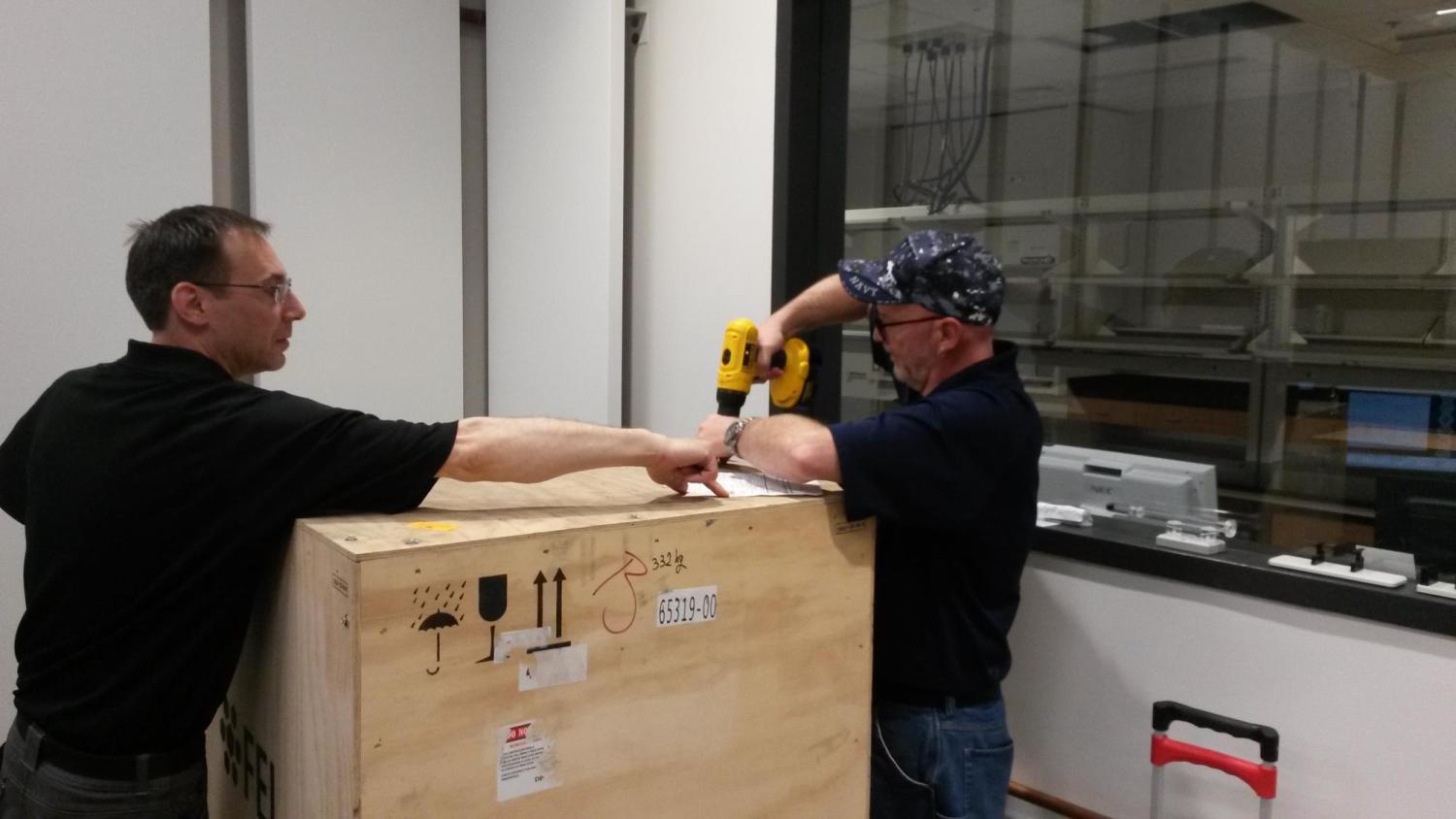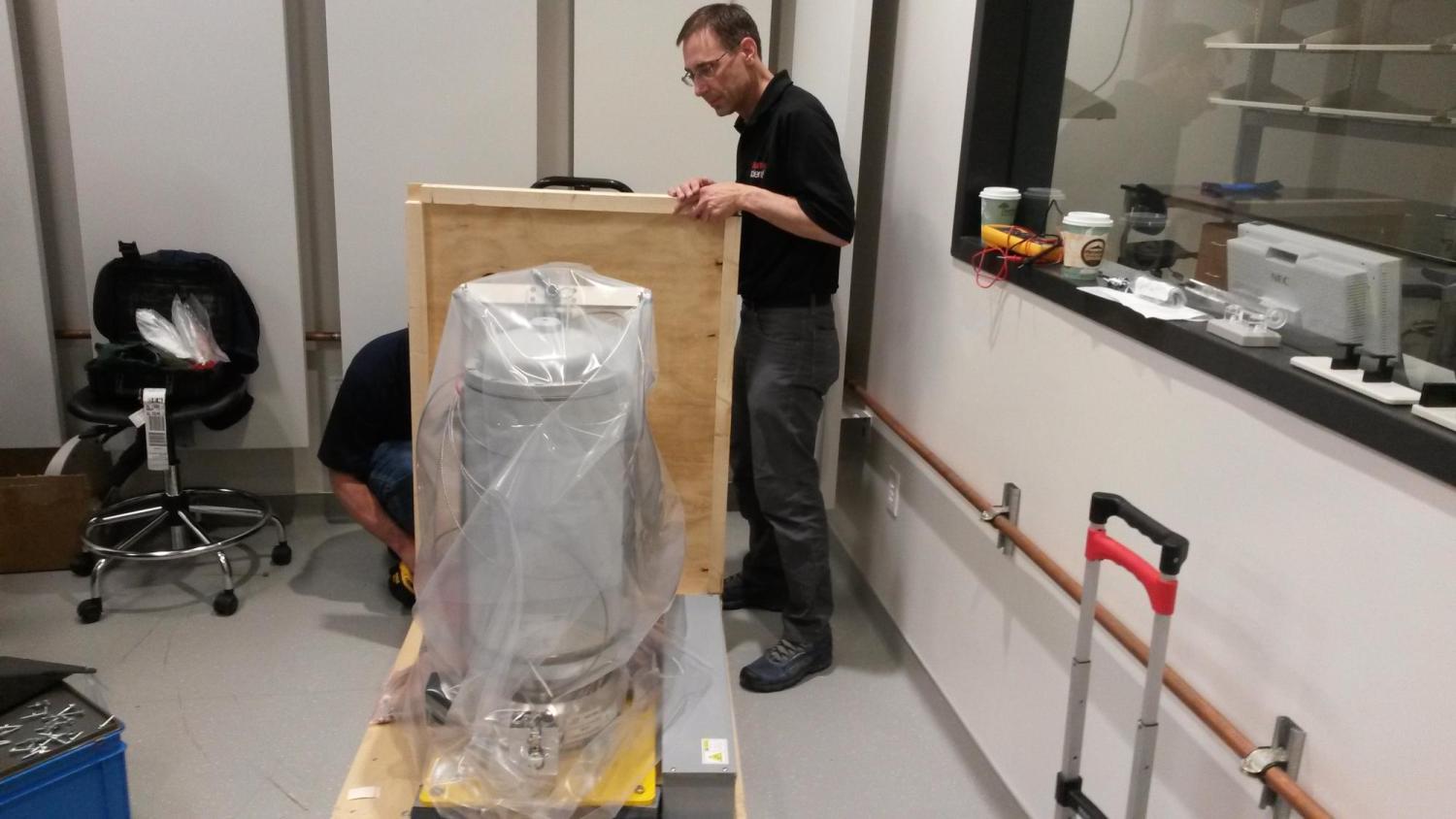News
New electron microscope at CU Boulder enables groundbreaking research across disciplines—and from a distance
Capable of achieving spatial resolutions of 70 pm—smaller than the size of an atom—the Thermo Scientific Titan Themis S/TEM, located in the newly-launched CU Facility for Electron Microscopy of Materials (CU FEMM), is now the highest-resolution electron microscope in Colorado. Read more
------------------------------------------------------------------
Come learn about Recent Advances for EELS Data Acquisition: Direct Detection and GIF Continuum
Date: April 16th
Time: 1:00-2:30pm
Location: SEEC, Room S228
For those interested in learning more about the Gatan EELS system, for which we submitted an MRI proposal to NSF last month, CU FEMM is hosting Dr. Paolo Longo from Gatan to present recent advances in EELS data acquisition. Dr. Longo is very knowledgeable in the field of electron energy loss spectroscopy (EELS) and has been working in Gatan (http://www.gatan.com/ ) since 2011. He has been involved in the development of different generations of EELS systems. Attached please find the abstract of his presentation.
------------------------------------------------------------------
BE Seminar, Emilie Ringe
Earth-Abundant Plasmonics
Presented by: Dr. Emilie Ringe, University of Cambridge, Departments of Earth Sciences and Materials Science and Metallurgy
Date: Monday, April 8 at 1:00pm
Location: JILA 10th floor, Foothills Room
Abstract:
The colorful optical properties of gold and silver nanoparticles have been known for centuries, appearing in Roman glassware as well as medieval stained glass. The brilliant colors are the result of collective oscillations of conduction excited by light, leading to wavelength-dependent absorption and scattering. This light-matter interaction can be controlled by the size, shape, and dielectric environment of the nanoparticles, tailoring their properties to applications such as surface-enhanced spectroscopies, non-bleaching labels, hyperthermal cancer therapy, and waveguides.
Most plasmonic metals studied to date are rare: copper and silver, which oxidize rapidly, and gold, which is cost-prohibitive. This talk will briefly discuss earth-abundant aluminum nanoparticles as a plasmonic material in the UV, then report results on a new composition: magnesium. Magnesium nanoparticles are remarkably active plasmonics across the UV, Vis and NIR, as shown optically and with STEM-EELS. Surprisingly, they are stable in air for weeks owing to a self-limiting oxide layer. Colloidal magnesium has potential on its own as a plasmonic structure, and can also be used as a scaffold for additional surface chemistry, sensing, and hybrid photocatalysts.
Bio:
Dr. Ringe earned her B.A./M.S. summa cum laude in chemistry, then Ph.D. in chemistry and materials science at Northwestern University in 2012. She became the Gott Research Fellow at Trinity Hall as well as a Newton International Research Fellow (Royal Society) in the Electron Microscopy group in the Materials Science and Metallurgy Department at the University of Cambridge, UK. In 2014, she was hired as an assistant professor at Rice University, where she established the Electron Microscopy Center and received funding from the Air Force Office of Scientific Research (YIP), NSF, ACR-PRF, 3M, and the US/Israel Binational Science Foundation.
In 2018, she moved to England to take up a lectureship in multi-scale, multi-dimensional imaging of natural and synthetic materials at the University of Cambridge, joint between the Department of Materials Science and Metallurgy and the Department of Earth Sciences. She received an ERC Starting grant (1.6M Euros) to pursue her studies of Earth-abundant plasmonics. She has been elected fellow of Gonville & Caius College, is an associate member of the Royal Society of Chemistry, and serves on the editorial board of Materials Chemistry Frontiers.
------------------------------------------------------------------
Come learn about Protochips in-situ TEM holder
Date: October 5th, 2018
Time: 3:00 - 4:30pm
Location: SEEC, Room S225
Learn more about Protochips and view an abstract of thier presentation.
View their presentation below.
[video:https://youtu.be/XUiowSXW4Vg]
------------------------------------------------------------------
Our Monochromator for the Titan Themis has arrived!
Now we'll be able to offer much better energy resolution and reduce the energy spread of our electron beam to below 0.1eV.



